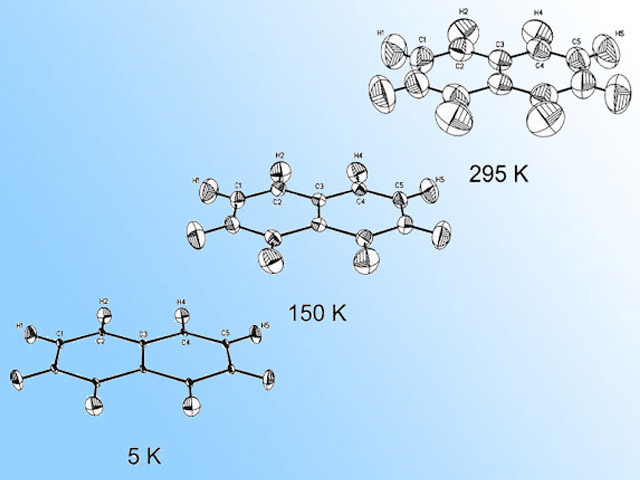D9
Hot neutron four-circle diffractometer
 (jpg - 49 Ki)
(jpg - 49 Ki)ORTEP thermal ellipsoids of the carbon and hydrogen atomsThese are calculated from neutron diffraction data at three temperatures.
Molecular Motion in Crystalline Naphthalene
This is an example of multi-temperature X-ray and neutron diffraction data analysis.
The aim of this case study was to measure the anisotropic displacement parameters (ADPs) of carbons and hydrogens and to interpret them using the model of thermal motion proposed by Bürgi and Capelli (Acta Cryst. 2000, A56, 403). The traditional rigid-body analysis expresses the low frequency motions in terms of molecular translations and librations only, whereas the Bürgi-Capelli treatment also includes the high-frequency internal modes.
Single crystals of h8-naphthalene have been examined by both X-ray and neutron diffraction over a range of temperatures from 5 to 295 K.
We show that a considerable improvement occurs by representing the internal modes by a single second-rank tensor and that a further improvement follows by including a Grüneisen parameter to account for volume thermal expansion. By applying the treatment to multi-temperature diffraction data, there is a considerable reduction in the ratio of number of adjustable parameters/number of independent observations.
Ref.: Silvia C. Capelli, Alberto Albinati, Sax A. Mason, and Bertram T. M. Willis J. Phys. Chem. A, 110(41), 11695-11703 (2006).
